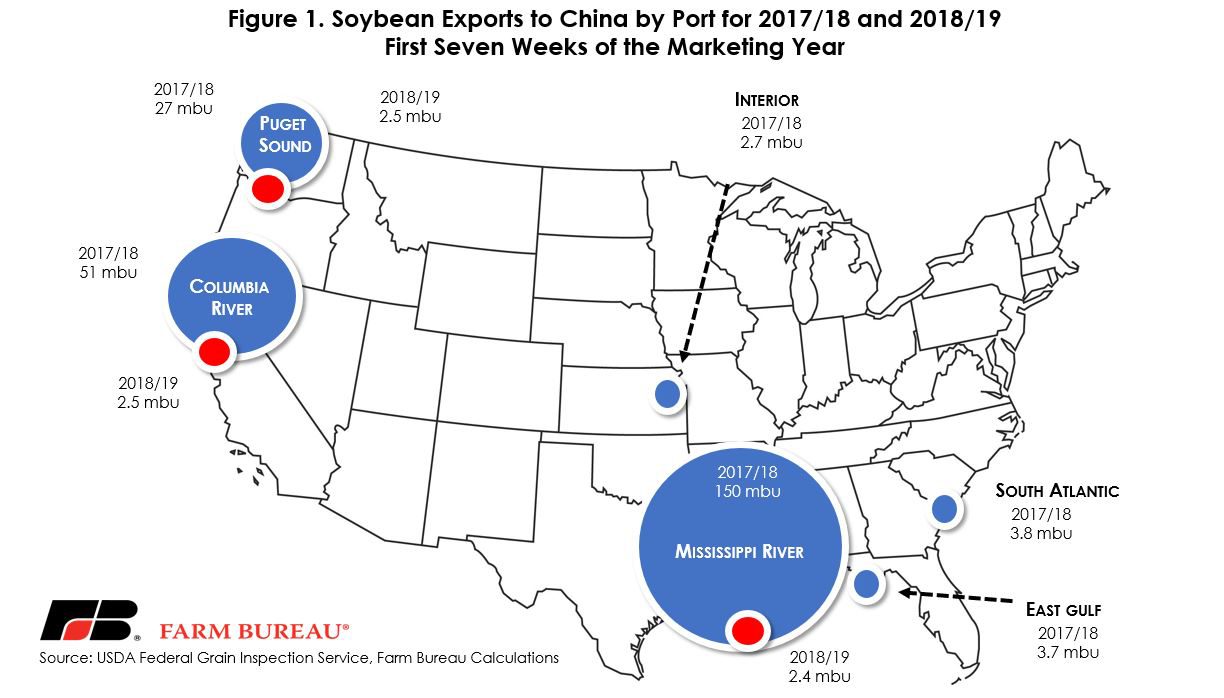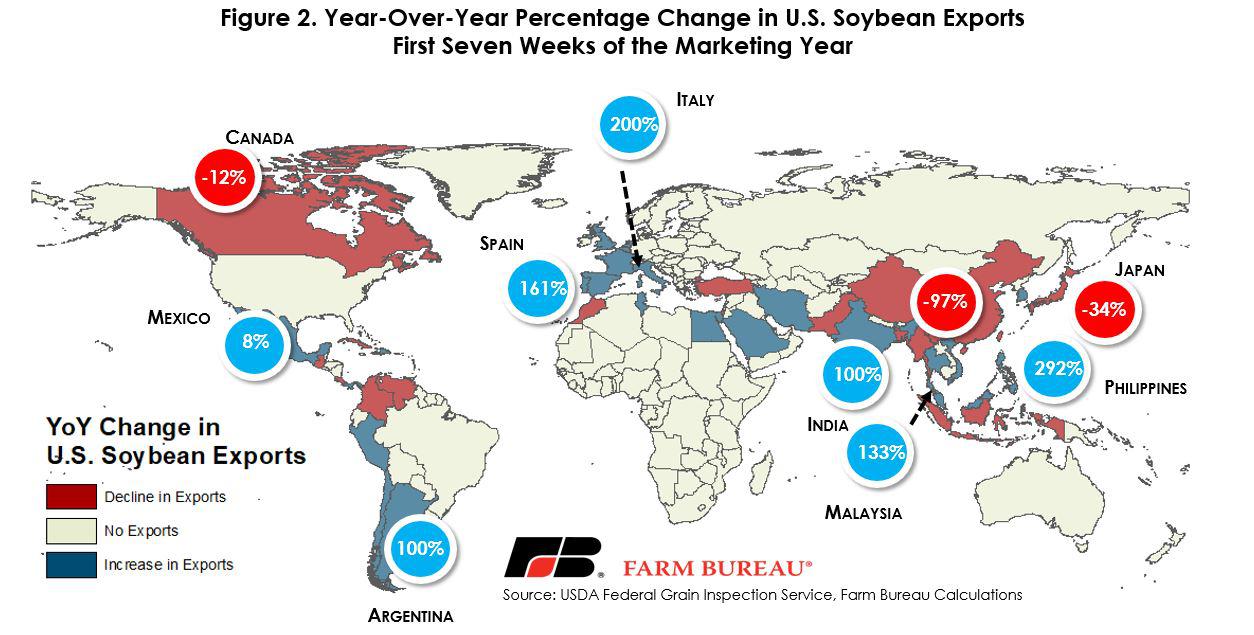U.S. Soybean Exports to China Fall Sharply
TOPICS
Trade
photo credit: AFBF Photo, Philip Gerlach
John Newton, Ph.D.
Vice President of Public Policy and Economic Analysis
USDA’s most recent World Agricultural Supply and Demand Estimates projects Chinese beginning stockpiles of soybeans for the 2018/19 marketing year at 825 million bushels--approximately 70 percent of the volume of U.S. soybean shipments to China during all of the 2017/18 marketing year. With large inventories on hand in China, it’s no surprise U.S. soybean exports to that country are down to start the 2018/19 marketing year. Way down.
USDA’s Federal Grain Inspection Service reveals that through the first seven weeks of the 2018/19 marketing year, 7.4 million bushels of new-crop U.S. soybeans have been shipped to China, down 97 percent from prior-year levels. Through the first seven weeks of the previous marketing year, the U.S. shipped 239 million bushels of soybeans to China, and during that same period in the 2016/17 marketing year the U.S. shipped 211 million bushels.
The retaliatory tariffs of 28 percent on U.S.-sourced soybeans have resulted in a sharp decline in China’s purchases. Shipments of soybeans to China have fallen by 98 percent along the Mississippi River, 95 percent out of the Columbia River and by 91 percent from the Puget Sound. Shippers in the Interior, South Atlantic and East Gulf regions have yet to make a soybean shipment to China, Figure 1.

Largely due to the slowdown in Chinese purchases, total soybean exports have also fallen significantly. Through the first seven weeks of the marketing year, soybean exports have totaled 218 million bushels, down 41 percent, or 149 million bushels, from the 367 million bushels shipped during the first seven weeks of the 2017/18 marketing year.
While China has purchased 231 million fewer bushels of soybeans this year than during the same period last year, other trading partners have taken advantage of lower-priced U.S. soybeans and increased their purchases. Currently, the U.S. has shipped soybeans to 41 countries, up from 30 countries last year. Of the 41 countries buying U.S. soybeans, 26 have increased their purchase volumes, representing an increase of 99 million bushels and offsetting the 248 million-bushel decline in exports to the remaining 15 trading partners.
Through the first seven weeks of the marketing year, Egypt has purchased 19 million bushels of soybeans, while Argentina has purchased 16 million bushels – both up from zero purchases the prior year. Spain has currently purchased 21 million bushels, an increase of 13 million bushels, or 161 percent, from prior-year levels. Figure 2 shows the year-over-year change in soybean exports through the first seven weeks of the marketing year.

The slowdown in total U.S. soybean exports has had an impact across major U.S. ports. Soybean exports out of the Mississippi River are down 36 percent, or 85 million bushels, from prior-year levels. Exports from the Pacific Northwest along the Columbia River and Puget Sound are down a combined 55 million bushels.
Part of the lower export volume is a function of the slower pace of harvest and the high levels of damage due to late-season rains. Another contributing factor is obviously the 28 percent Chinese retaliatory tariff on soybeans. The combined effect is fewer U.S. soybeans passing through export terminals. With fewer soybeans entering the export market, there are fewer opportunities to blend damaged soybeans and the net impact has led to very large price discounts for soybean growers currently in the cash market.
As the pace of harvest accelerates there will be more opportunities to blend soybeans and then service the export markets. At what price is the important question. USDA currently projects the marketing year average price at $8.60 per bushel, down 73 cents from the prior year and the lowest price in more than a decade. At that price the U.S. is bound to make more export sales, whether they are to China remains to be seen. This game of chicken is far from over.
